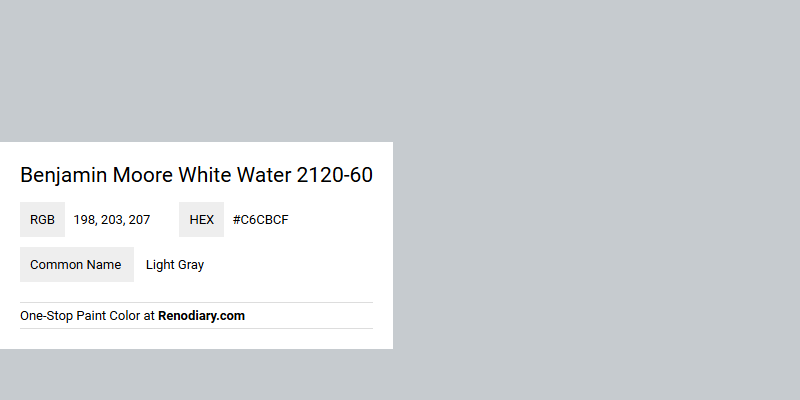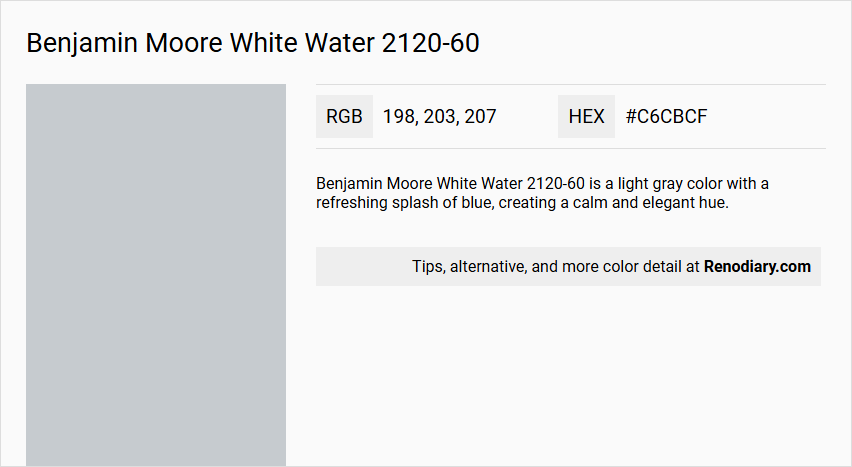
Benjamin Moore's White Water 2120-60 is often perceived as a subtle and soothing shade of light gray, balancing a blend of soft hues that evoke tranquility. Its RGB composition of 198, 203, 207 highlights its gentle undertones, making it an ideal choice for spaces seeking a calm and airy ambiance. This particular shade complements a variety of design styles, effortlessly enhancing both modern and traditional interiors with its sophisticated simplicity.
Benjamin Moore White Water 2120-60
Color Description
Benjamin Moore White Water 2120-60 is a light gray color with a refreshing splash of blue, creating a calm and elegant hue.
Undertones
The undertone of White Water can be accurately described as a blue hue, which is evident from its color space.
Color Values
- HEX Value: #C6CBCF
- RGB Code: RGB(198, 203, 207)
- CMYK Values: 4.3%, 1.9%, 0.0%, 18.8%
- LRV (Light Reflectance Value): 58.77
Usage
This color is versatile and pairs beautifully with both modern and traditional decor, making it ideal for bedrooms, bathrooms, and living spaces. It is part of the Color Preview collection, which offers a range of hues to bring spaces to life.
Atmosphere
White Water creates a soothing atmosphere, evoking a sense of calm and tranquility. It helps to make rooms feel more spacious and airy due to its higher LRV, while also adding a touch of serenity and sophistication to the interior design.
Benjamin Moore White Water 2120-60 Color Alternative
Benjamin Moore White Water 2120-60 presents a refined base that seamlessly complements contemporary and classic design palettes. Designers seeking an alternative often turn to Tikkurila H499, Tikkurila G489, and Dulux Beachcomb Grey 30GG 61/010 because these selections offer a harmonious balance of cool undertones and neutral elegance. Each of these options provides a distinct twist on the original, ensuring that spaces maintain a sophisticated atmosphere while offering subtle variations that suit diverse aesthetic preferences.
Bathroom
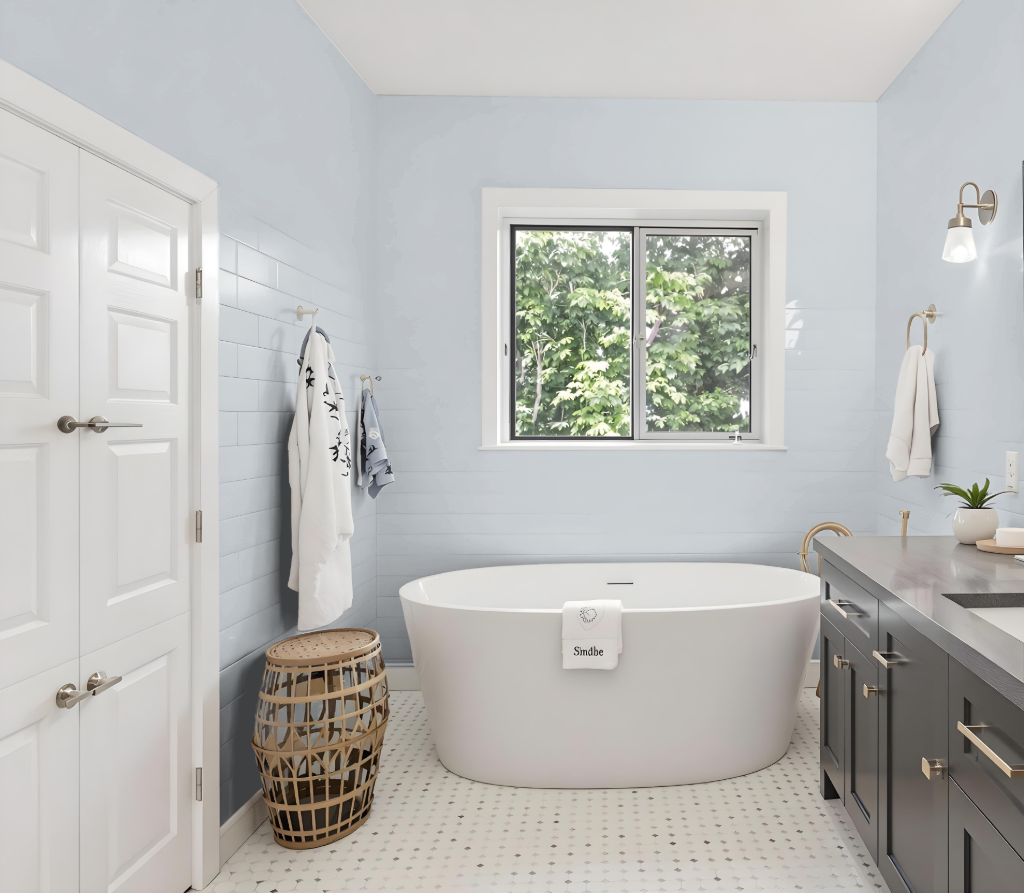
Benjamin Moore White Water 2120-60 is an excellent bathroom color that creates a calming and soothing atmosphere ideal for spa-like spaces. Its subtle tone works wonderfully with both modern and traditional decor, making it a strong choice for various bathroom designs.
This hue can be enhanced when paired with richer grays or softer pastels to elevate the overall aesthetic. For added durability and to maintain its vibrancy in high-humidity environments, consider complementing it with finishes that resist mildew and withstand moisture challenges.
Bedroom
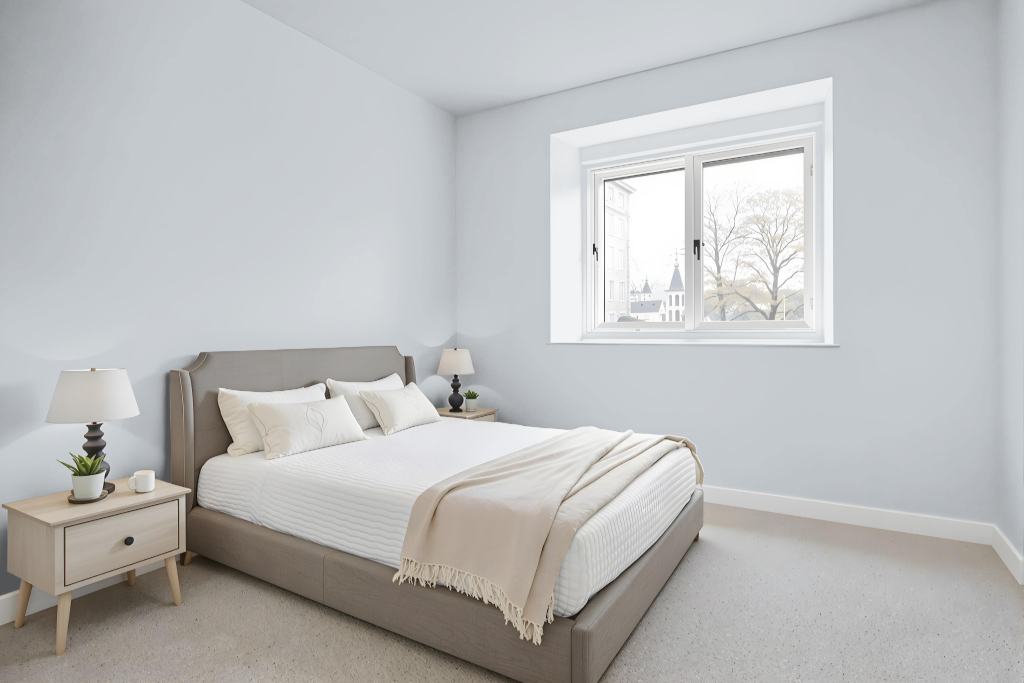
White Water offers a serene bedroom color that balances brightness with calming depth, ensuring a comfortable, inviting environment for rest and relaxation. Its light-reflecting quality contributes to creating a space that isn’t too dark or overly bright, promoting a sense of peaceful equilibrium.
Part of an expansive design collection, this refined shade pairs effectively with complementary tones like Chalk White, White Heron, and Hickory Stick to form a harmonious color scheme. The thoughtfully chosen palette enhances the room’s ambience, making it ideal for spaces where comfort and understated elegance are paramount.
Kitchen
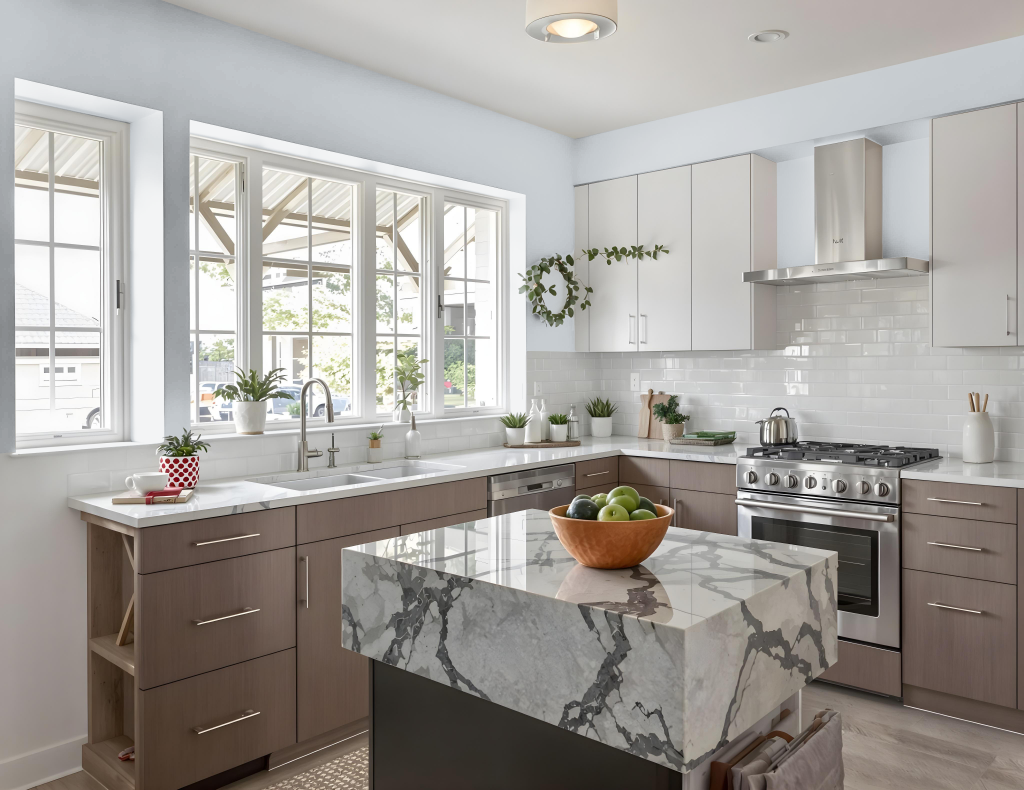
For a kitchen color scheme, Benjamin Moore White Water 2120-60 brings a calm and refined character that adapts beautifully to different lighting conditions, ensuring the space remains bright and airy. Its inviting foundation makes it an excellent backdrop for any design approach, setting the stage for creating a balanced and engaging environment.
To build on this harmonious base, consider incorporating complementary hues with warmer notes to counterbalance its cool undertones. For those interested in a monochromatic palette, lighter tones offer a soft transition, while deeper shades provide contrast and dimensionality; additional matching colors can further enhance the overall unity of the kitchen design.
Living Room
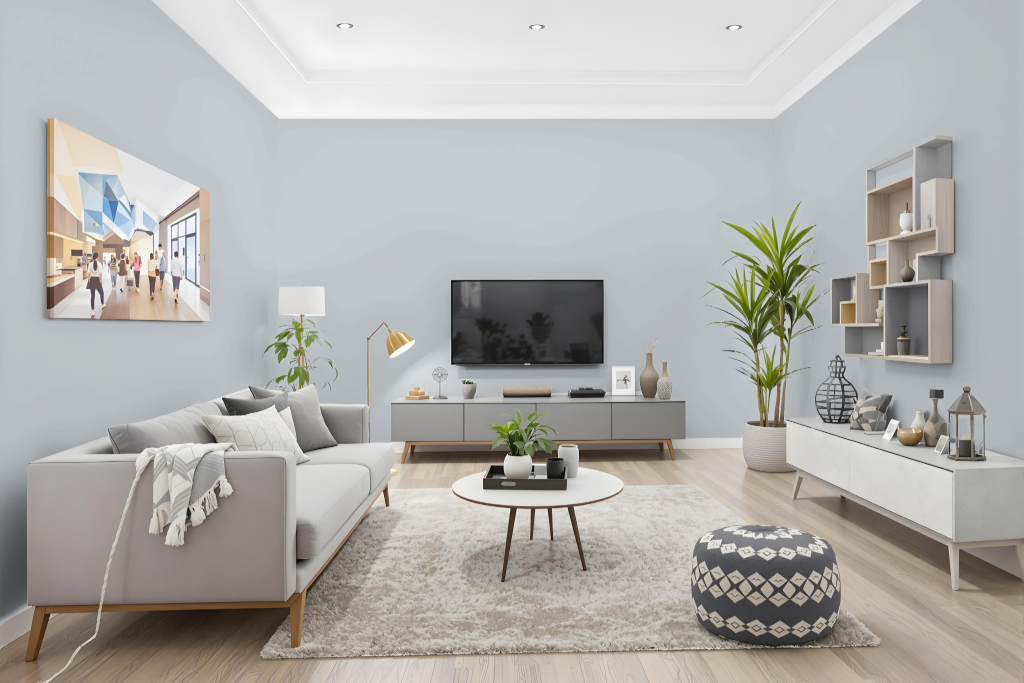
Benjamin Moore White Water 2120-60 is an excellent living room color that creates a soothing and bright environment. Its moderate light-reflecting quality helps maintain an airy feel while providing a calm backdrop suitable for both modern and traditional design elements.
This shade pairs harmoniously with complementary tones such as Chalk White, White Heron, and Hickory Stick, and it can be accentuated by similar colors like Sweet Innocence, Silver Lining, and Metallic Silver. The overall effect is a balanced, cohesive interior that enhances a warm and inviting living space.
Outdoor
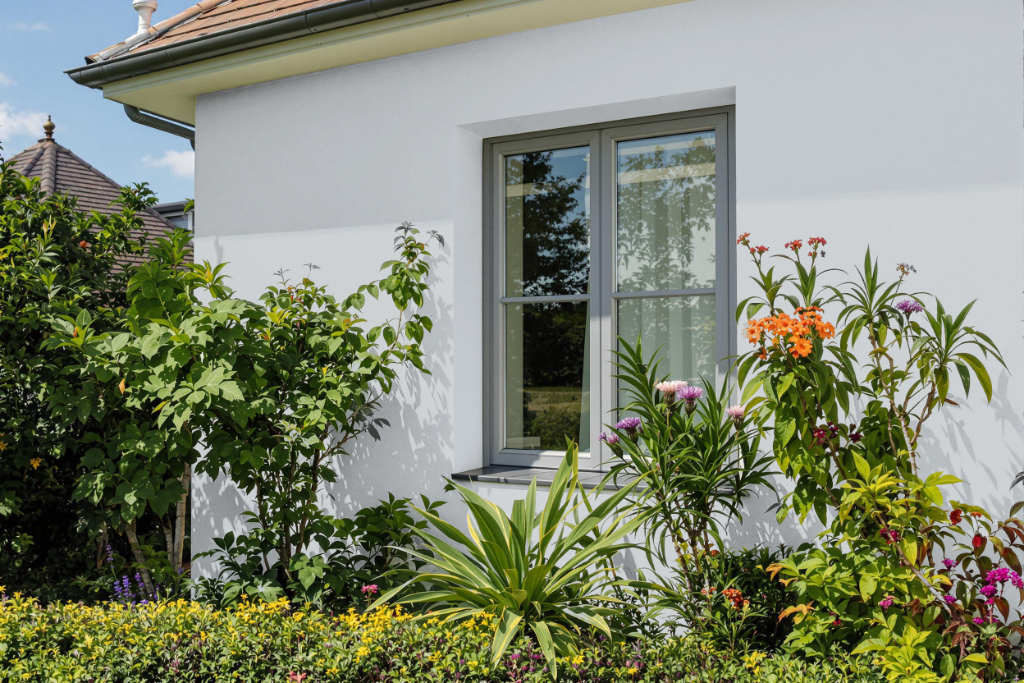
For home outdoor color projects, note that Benjamin Moore White Water 2120-60 is designed for interior settings. This color works well in evaluating shifts in lighting, and its eggshell finish offers ease in cleaning and maintenance in spaces with low to moderate foot traffic.
For exterior applications, it is recommended to select a product specifically engineered for the challenges of sun and weather exposure. Choosing the proper formulation for outdoor surfaces ensures durability and long-lasting results when faced with environmental stress.
